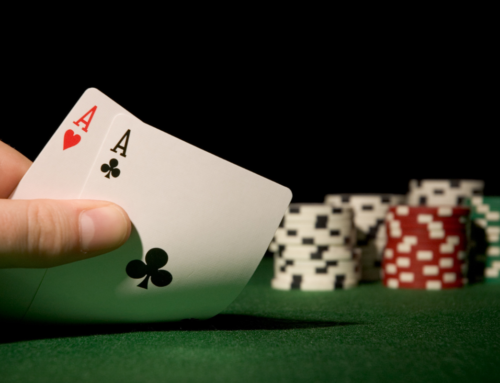What can hand gestures tell us about openness? Not those obvious one like the peace signal, or the middle finger. Those are known as 'emblems'. No, the ones we all make when we talk — the apparently meaningless accompaniment to speech, as we wave our hands to think of a word, or emphasize a point.
These gestures signal intent all the time. When people reach toward us with open gestures, for example, they’re usually signaling openness. Only rarely is it something else, like a left hook to the jaw. An embrace, the ultimate open gesture, is a combination of open hand gestures and open torso.
Openness can be read in the hand itself as well. What is it doing? Is it clenched or nervously kneading the other hand? Is it twitchy or attempting to conceal itself in a pocket? Hands speak an endless and fascinating language; they are marvelous little weathervanes to the state of the soul within and its intents. If you make a practice of watching other people’s hands, you’ll learn about the state of their nerves, their defensiveness, their confidence, their anger, their happiness, their sorrow, their interest or boredom, in addition to their openness or lack thereof.
Many books on body language purport to give specific meanings of specific gestures, but this is a fool’s game. Each gesture can have a multitude of meanings. We cross our arms, to pick a simple example, because we’re defensive, to be sure, but also because we’re tired, we’re cold, or we want to hide an expanding belly.
If you’re looking for the answer to a specific question, then you can put that unconscious expertise to work for you. Ask yourself, Is this person open or closed toward me? Then start looking for the clues that you need to make a determination.
The best way to do this is to pose the question to your subconscious mind first. Ask yourself at the beginning of the conversation, Open or closed? and wait for your intuition about the matter to become clear. Once you have a sense of the situation, you can start looking consciously for clues to confirm or negate your initial reading.
Suppose you’re at a job interview, and you want to know what your chances of success are. The first question you might want to consider is whether you are even in the running. In other words, is this a real interview or a courtesy interview? So begin the interview asking yourself, Is this person open or closed to me? If the answer comes back closed, then you can be reasonably sure that someone else already has the job.
If the person seems open, you can turn on your energy and charm. You may want to be on the lookout for a change in that reading. What if the interviewer has been open for, say, the first forty-five minutes of the interview and then suddenly starts to send out closed signals? It might be time to change tactics or cut the interview short.
Has the interviewer made up her mind in the negative, or is she simply signaling that the time is up? You may want to ask some specific process questions (out loud) to see, such as, “What’s the next step? How will you go about making a decision?” Then the question to ask your unconscious mind is, Open or closed? If the answer is given in a closed way, you probably won’t get the job. If the body language at that point is open, you are still in the running. A bolder question in that same situation might be to ask, “How do I stack up against the other applicants?” Be prepared for both an answer you like and one you may not like!
Because adults become more or less adept in controlling their faces and upper bodies, it’s worth looking at the legs and feet for interesting counter signals. Often someone has composed his or her face in a friendly greeting, but the legs and feet (and the torso too) may tell a different story. The legs may be crossed away from you, signaling a closed orientation, or the torso may be twisted away, or the other person may simply increase the distance, even slightly, between the two of you.
More about all of this in Trust Me: Four Steps to Authenticity and Charisma.








I never understand posts like this. When I am most open and want to learn about a topic, I am usually leaning back, legs crossed, and arms crossed. It’s a comfy position. And so much of this is cultural. Its different around the world.
Matt — thanks for your comment. When you adopt that ‘listening’ posture, your conscious mind may think that you’re listening, but your body language is saying, “I typically react to new ideas with defensiveness.” Here’s an experiment to try. Instead of adopting your typical posture, try leaning forward slightly with an open torso. A study recently done of students found that they retained more information and retained it for longer periods of time when they listened with an open posture.
On your second point, that is what people used to believe. But all the cross-cultural research of the last 10 years shows that in fact most of these basic gestures are the same world-wide. There was a nice study done of Japanese vs Americans on precisely the open gesture question. What it found was that the Japanese responded exactly the same way the Americans did first, then there was a secondary, cultural response that was different.